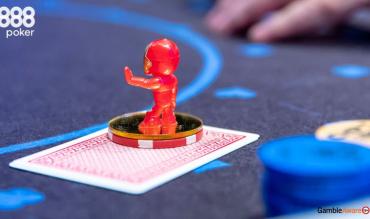Betting is a significant part of any poker game, and there are several betting types. The ante is one of the more common bets in many variants and helps get the action started with money already in the pot.
Here’s a quick look at antes in poker and what to expect when playing games featuring antes.
What Does an Ante Mean in Poker?
An ante is a forced bet that all players make before a hand gets underway. This process ensures that there is already something to play for as the action gets going. The predetermined ante generally stays the same in cash games but may escalate in tournaments.
Recent changes in poker have also created the big blind ante. This article will discuss that further.
Antes are generally uncommon in cash games, although such ante games exist. The exception is stud variants of poker, which always require an ante.
One reason for this is that there is not usually a dealer button in stud variants, meaning that mandatory small blind and big blind aren’t in play.
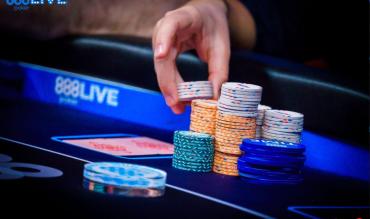
Without antes in stud, there wouldn’t be much of a pot to fight for in the first betting round (aside from the forced bring-in). The antes in poker seed the pot for the betting to get started with the goal of winning more.
Cash games with a dealer button rarely use antes, which is key to understanding the meaning of ante poker. The small blind and big blind payments have already built a small pot for the initial betting round.
However, it is essential to know that many “dealer calls” types of home games may employ an ante. These games may even feature wild cards. Players use antes in many of these less common poker formats.
What Does an Ante Mean in Poker Tournaments?
Most poker tournaments employ antes, but typically only in the later rounds. The initial blind levels in a tournament usually only involve small blind and big blind payments. The exception again is stud variants since the ante payment is integral to the game.
In fact, when describing the limits of stud games, the ante amount is generally in that description.
For example, $1/$2/$0.25, where 25 cents is the ante. An additional number at the end may also describe the size of the “bring-in” payment in stud, i.e., $1/$2/$0.25/$0.50.
Examples of Ante Used in a Sentence
Now that you know what an ante is, using the term correctly is always good when playing in a casino or hosting a home game. It’s essential to remember that the word ante can be used both as a noun and a verb.
Here’s a look at a few examples of how to use ante in a sentence:
"It was the late stage of a tournament, so we had to post both blinds and antes.""Mike’s home game often included poker games with antes.""I meant to ante but forgot and had to put my chip in the pot later.""My friend got out the cards and chips for some poker, so it was time to ante up." |
Ante Poker Strategy: Adjusting Your Preflop Game
Whether in a cash game (such as Hold’em or Omaha) or the later stages of a tournament, the forced payment of antes typically incentivizes looser decisions In the preflop betting rounds.
Players may enter a pot with less than stellar hands because there is more money in the pot.
For example, imagine a six-handed $0.05/$0.10 online poker table. There will typically be $0.15 in the middle before any player gets to act. If we assume that it's a game with a 2-cent ante, there will be an additional $0.12 in the middle, for a total pot size of $0.27 before any betting takes place.
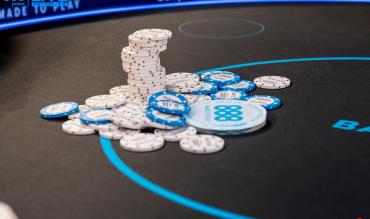
Seeing as the pot size is nearly double, in this instance, it would be a mistake to assume that the preflop strategy will remain the same as with no forced antes.
What Is a Big Blind Ante?
In recent years, more tournament series have gone to the “big blind ante” when reaching the point of adding antes. In these types of events, the player on the big blind pays both the big blind and the ante for all players.
There are a few reasons that casinos have enacted this type of ante:
- The big blind ante speeds up the game as the dealer doesn't have to make sure every player has anted.
- There is less confusion about missed blinds because only one player is responsible for all the antes at the table.
- Reduces confusion overall and simplifies the ante process.
So, how does a typical big blind ante work?
Imagine a tournament with blinds at 50/100 and an ante of 25. The player on the big blind would post the 100-chip big blind and the 25-chip ante for all players – another 100 in chips at a table of eight.
This setup is less common in cash games but is increasingly more prevalent in tournaments. The player on the big blind has a bigger chunk of their stack in play, so there may be added strategy considerations.
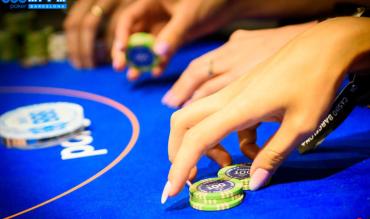
This player may want to open their poker hand range and call more raises from this position. They have much more of their chip stack already in the pot.
Ante FAQs: Common Questions About Poker Antes
H3: When does the ante increase in poker?
This answer depends on whether we are playing cash games or tournaments. In cash games, the ante does not change. In tournaments, the ante will typically increase along with the blinds after each tournament level. Some tournaments also now utilise the big blind ante, with the players on the big blind paying the antes for all players at the table. This process is “anteing up” in poker lingo.
How much is the ante in poker?
The size of the ante depends entirely on the local rules of the game. In the majority of cases, it will be around 10% of the big blind. A $ 1/ $ 2 No Limit Hold'em cash game might have an ante of $0.20. In a game like Stud, the ante will usually be 10% the size of the small bet.
Many “dealer calls” types of home games may also use antes to build pots. These games are generally low-key, friendly games with family and friends. Antes are common in home games that use wild cards as well.
What does it mean to “up the ante”?
In some games, 'up the ante' can refer to increasing the size of the ante (perhaps at the end of a tournament level). However, players might hear the phrase' poker ante up,' reflecting the need to add antes during gameplay.
It is far more common as a figure of speech that means to increase the stake or amount wagered. For example, during a cash game without antes a player says, “Let’s up the ante.” This phrase has nothing to do with antes whatsoever. Instead, the player is suggesting they increase the stakes.
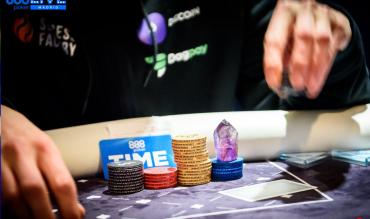
The expression “up the ante” has widespread application outside of poker. This saying appears in business, sports and other contexts. You may see this phrase in television and movies, where it has come to mean raising expectations or the stakes involved in an event or decision.
Does everyone need to pay the ante?
Everyone at the table needs to pay the ante before any hole cards are dealt. This requirement includes the players in the blinds. For example, the player in the big blind position must pay the mandatory big blind and the required ante.
In a big blind ante format, the player on the big blind pays the antes for all players at the table.
Do players sitting out pay an ante?
Tournament players continue to pay the blinds and antes as usual, even if they are sitting out. Cash game players sitting out do not need to pay any blinds and antes until they return to the action.
See Also
